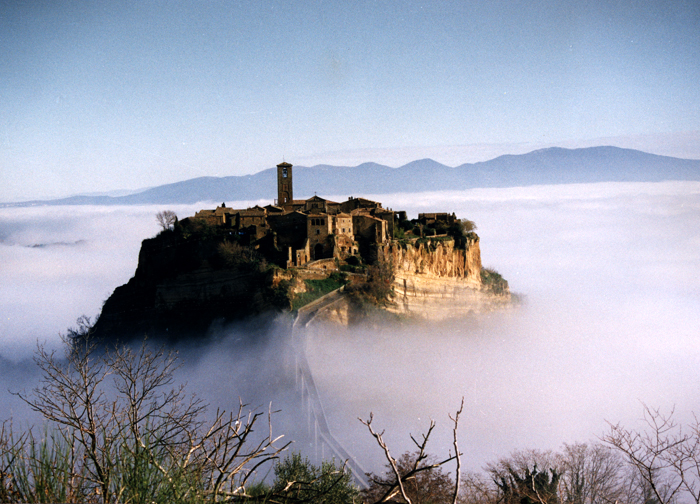-
A FILM BY NATALIE REUSS
-
×
Follow Our Progress
We invite you to join our mailing list to stay current with all the news on Civita the Film.
ABOUT THE FILM
An Italian Hill Town
CIVITA is a poetic, observational film about Civita di Bagnoregio, an exquisitely beautiful Italian hill town 80 miles north of Rome. Known as both the enchanted city in the sky and citta che muore—the dying city—Civita sits atop a cone of volcanic stone. First inhabited by Etruscans in the 6th century B.C. and later by the Romans, the town is separated from the mainland as a result of centuries of violent earthquakes and erosion. Despite the loss of whole sections of the town to landslides and quakes, people have carried on living as their ancestors lived, day-to-day, century after century. The intention of the film is to capture the spirit and poetry of this fragile, ancient place by recording its daily and seasonal life with the passing of winter, spring, summer, fall.
The camera follows a Mediterranean sun as it extends and attenuates light across the decumanus maximus (Roman Road), piazza, church and bell tower, arched doorways, single surviving walls of houses set on a sheer precipice, grape and olive harvests, colossal reinforcement projects constructed to stabilize cliffs that crumble like ricotta cheese, swarms of invading tourists and encounters with the remaining long-term inhabitants who give witness to past and present, attempting to keep hold of the thread of hill town life that has worn so thin.

Vittoria, Civita's 99-year-old Matriarch Civita’s year-round residents are now fewer than 10, though over a million international tourists scrambled over the ruins last year. The enchanted city in the sky is becoming a postcard city—a commodity for consumption. The ancient social fabric and daily seasonal life are unraveling. Memories and culture are vanishing. The songs and stories of Vittoria Medori, Civita’s 99-year-old matriarch, and the special winemaking skills of Antonio Bastoni will exist no longer.
Yet the citta che muore resists death. CIVITA, the film, will deftly turn this hill town’s story into an allegory that urges us to consider: Can this ancient culture be authentically preserved?

photo credit: WMFThe World Monuments Fund (WMF) placed Civita on its Watch List in 2006, a designation that has assured extensive seismic work to stabilize Civita’s crumbling walls would commence.
Two years later, the Northwest Institute for Architecture and Urban Studies in Italy/Civita Institute (NIAUSI/CI) joined WMF on a mission to put Civita on the international map with a symposium that addressed the hill town’s pressing geological and cultural issues. “A conservation master plan and tourism management plan are urgently needed if such an ancient settlement is to weather another century.”
In the spring of 2015 Civita was assaulted by disastrous landslides. Claudio Margottini who heads Civita’s geological preservation project wrote then: "A new landslide occurred near the foot of the bridge, which caused the closure of the road. We have made an urgent appeal to UNESCO to save Civita and gain its recognition as a UNESCO World Heritage Site. That appeal has been supported by international governments, scientists, intellectuals and artists, including film directors Giuseppe Tornatore, Bernardo Bertolucci and Nobel Prize winner Dario Fo." Civita’s nomination was made and the decision as to status will be announced at the UNESCO meeting in September 2023.